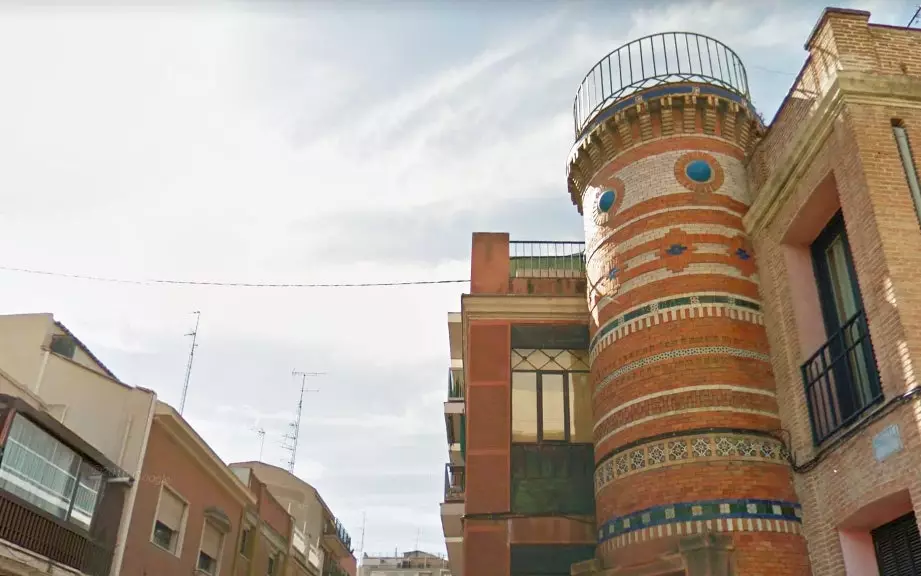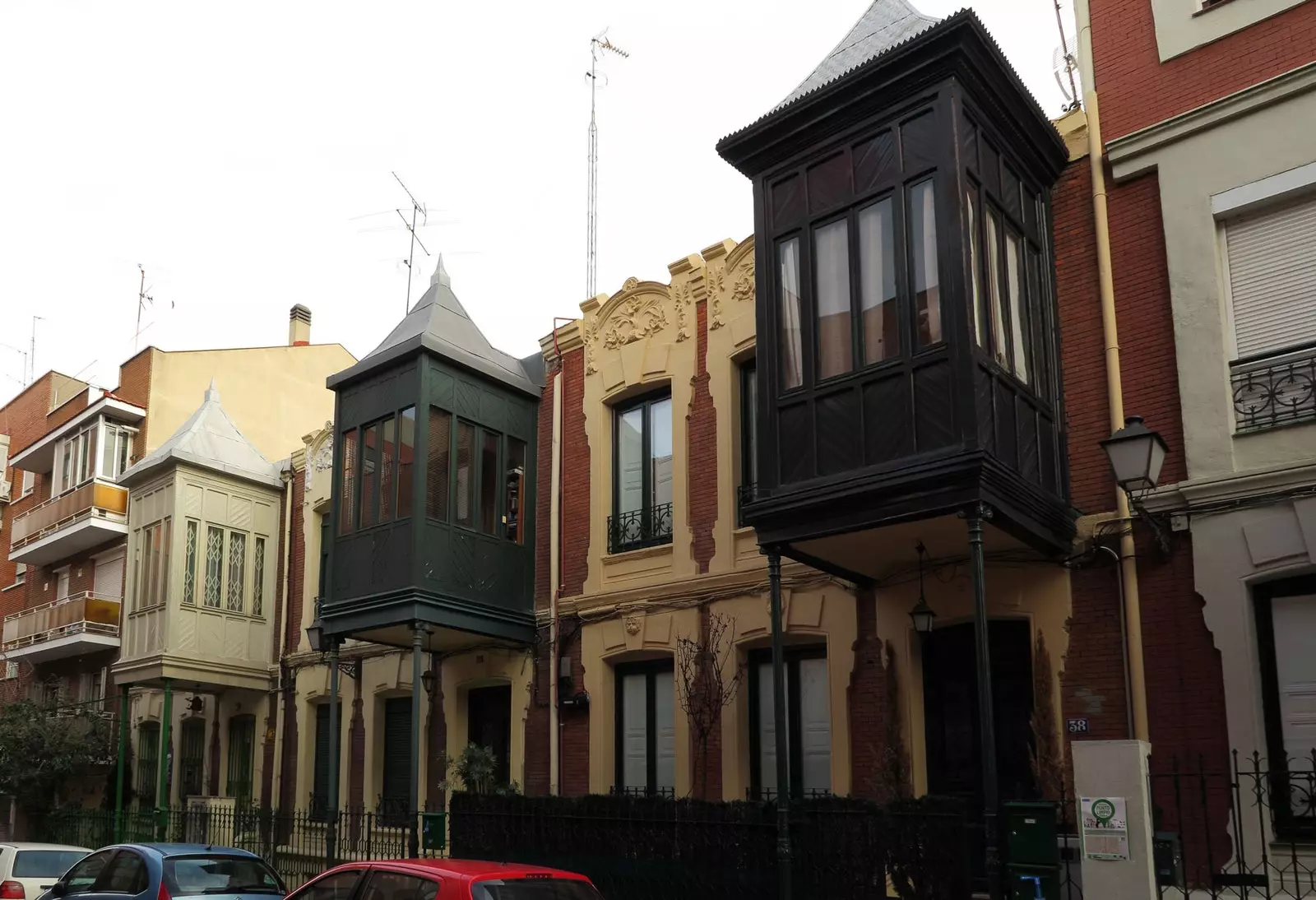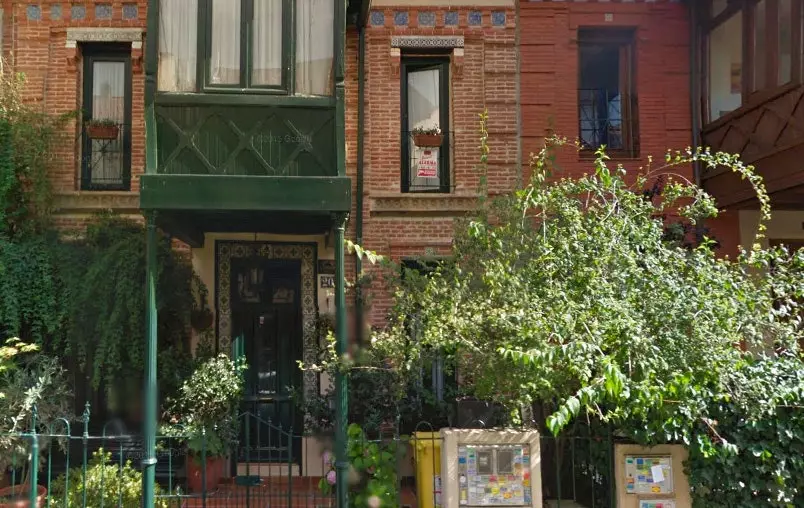
The corner of Castelar and Cardenal Belluga streets
A few steps from Madrid's Las Ventas bullring , sandwiched between traditional and prosaic apartment buildings, a dozen eccentric chalets are hidden that clash with the anodyne of their neighbors. Its characteristic viewpoints overflow the line of its façade, barely supported by fine iron columns.
With its two brick floors, they seem like anachronistic memories of a city that hardly exists anymore. It is the last redoubt of 'Modern Madrid' , a project of modernist houses that arrived in the area before the bullring itself and that it even had its own tram line that linked it to the center.
The line Goya-Modern Madrid-Sales I walked through this modernist neighborhood, which once had more than fifty houses, and connected it with the city center.
This neighborhood, Guindalera , was in that Madrid at the end of the 19th century and the beginning of the 20th the outskirts, the perfect place to shape a somewhat utopian project by businessman Santos Pinela and architect Julián Marín: offer spacious, two-story, basement, garden, and patio homes at affordable prices. And in which, in addition, there was water, sewage, gas and electricity except, yes, for public lighting.

The houses of Roma Street
The idea was promote social integration through cheap housing but, following the urban conception of Arturo Soria , in which its garden and its recreation area were not lacking. The first houses began to be built without a license but with the permission of the Liberal Party , in government at the time.
An implicit authorization that the Conservative Party did not renew when he came to power so, when dozens of them were already up and there were even more under construction, the project was paralyzed.
After several years of litigation, a new contractor –Francisco Navacerrada– took over the project and, after legalizing it, continued its expansion. Thus was born a colony that exceeded fifty houses and whose modernist style was not liked by many in its time.
One of his most famous detractors was the writer and journalist José Martínez Ruíz, better known as Azorín , who describes these so-called ‘hotels’ of Modern Madrid as a “paintwork set of chafarrinajedas walls in red and yellowish welts , balustrades with vases, blue and green glass, cupolas, sordid windows, red and black roofs”.
and concludes with a “all garish, small, presumptuous, lewd, fragile, aggressive in bad taste, of a cackling vanity, typical of a town of shopkeepers and bureaucrats”.

The modern Castelar street
Azorín was not the only one who was not convinced by the style of the Modern Madrid colony, although, according to the chronicles of the time , that "beautiful and hygienic" neighborhood could be considered “the most European of all Madrid neighborhoods”.
However, it barely survived a few decades. Population growth and real estate pressure meant that many of these houses were demolished to build blocks of flats, although there were ** cases in which some chalets were protected .** Of course, not enough for that example of modernism came to the present day unharmed.
Today, a striking tower located on the corner of Castelar and Cardenal Belluga streets It can be considered the gateway to this depleted colony.
A reduced and modest version of the Casa de las Bolas that shows off its majesty on Calle Alcalá. The resemblance has an obvious reason and that is that both were built by the same hand, that of the architect Julián Marín.
Next to this tower there are only a dozen houses scattered between Calle Castelar and Roma. The most restored show off their wide wooden viewpoints and the brick of their facades where there is no shortage of colorful Neo-Mudejar details and lively tile decorations.
They are surprising in a city packed with homogeneous and functional buildings in which absolute use of space prevails.
Its floors, its unusual windows and its two floors with a garden are not only a small reminder of the scarce modernist style that is preserved in the capital, they are also the misplaced redoubt of an era and of a utopian concept of urban planning.
